James Doolittle
Courtesy The Columbus Dispatch, (Ohio) 9 November 2013, in an article by Dan Sewell.
Edited by David Barth 18 January 2014.
by Dan Sewell, The Columbus Dispatch:
DAYTON - Thousands of visitors streamed to the national Air Force museum today to pay a Veterans Day weekend tribute to the few surviving members of the Doolittle Raiders, airmen whose daring raid on Japan helped boost American morale during World War II, as they planned to make their ceremonial final toast together.
With many waving flags, spectators ranging from small children to fellow war veterans greeted three Raiders who waved from a motorcade into the National Museum of the U.S. Air Force near Dayton.
After a memorial service and B-25 bomber flyover, the Raiders planned to make a last toast to comrades who died in or since their mission. The toast grew from reunions led by Lt. Col. James "Jimmy" Doolittle, who commanded the daring mission credited with stunning the Japanese after a string of military successes.
"It's a piece of history, it's the last time," said Bruce Sink, 62, of Kettering, Ohio, who was browsing books about the Raiders at the museum gift shop. "These were pretty brave guys."
Twelve-year-old Joseph John Castellano's grandparents brought him from their Dayton home.
"This was Tokyo. The odds of their survival were 1 in a million," the boy said. "I just felt like I owe them a few short hours of the thousands of hours I will be on Earth."
Only four of the 80 Raiders are still living, and one was unable to attend today because of health issues.
Officials at the National Museum of the U.S. Air Force said more than 600 people, including Air Force leaders and Raiders widows and children, were expected for the invitation-only ceremony this evening. Also expected were relatives of Chinese villagers who helped Raiders elude capture and two U.S. survivors of the Japanese attack on Pearl Harbor five months earlier.
After Thomas Griffin of Cincinnati died in February at age 96, the survivors decided they would gather this autumn for one last toast together instead of waiting as had been the original plan for the last two survivors to make the toast.
Raiders participating today were Lt. Col. Richard "Dick" Cole, Doolittle's co-pilot, 98, of Comfort, Texas; Lt. Col. Edward Saylor, 93, of Puyallup, Washington, and Sgt. David Thatcher, 92, of Missoula, Montana.
The fourth surviving Raider, Lt. Col. Robert Hite, 93, couldn't come, but his son and other family members from Nashville, Tennessee, planned to represent him. Son Wallace Hite said his father, wearing a Raiders blazer and other traditional garb for their reunions, made his own salute to the fallen with a silver goblet of wine at home earlier in the week.
Hite is the last survivor of eight Raiders who were captured by Japanese soldiers. Three were executed; another died in captivity.
The 80 silver goblets in the ceremony were presented to the Raiders in 1959 by the city of Tucson, Arizona. The Raiders' names are engraved twice, the second upside-down. During the ceremony, white-gloved cadets pour cognac into the participants' goblets. Those of the deceased are turned upside-down.
The cognac will be from 1896, Doolittle's birth year.
The volunteers for the April 1942 mission were told only that it would be extremely hazardous when they began training. The attack on Tokyo and other locations on Honshu Island began with the risky sea launch of 16 land-based bombers from the aircraft carrier USS Hornet. After the attack, the planes lacked fuel to reach safe airfields in China.
Three crew members died as the Raiders bailed out or crash-landed their planes in China, but most were helped to safety by Chinese villagers and soldiers. The Japanese retaliated by executing Chinese suspected of helping the Americans.
The raid caused minimal damage to the targets, but embarrassed the Japanese high command, which redeployed its naval forces. The Japanese resolved to prevent further such attacks by destroying the U.S. carriers, a decision that led to the devastating defeat at the Battle of Midway in June 1942 that was a turning point in the Pacific war.
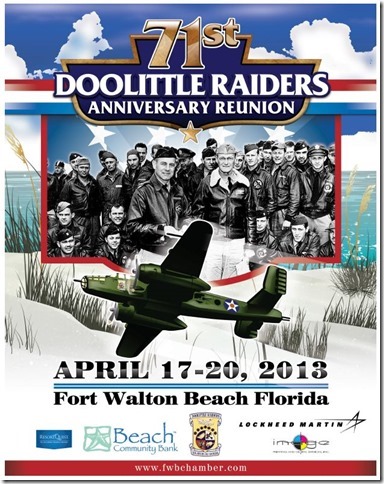 |
| Doolittle's Raiders. |
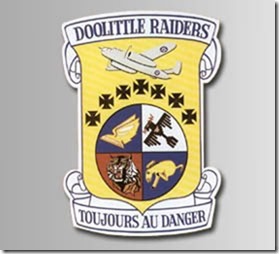 |
| Doolittle's Raiders. |
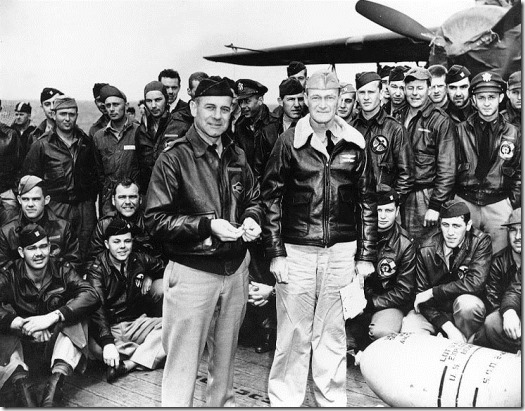 |
| Doolittle's Raiders. |
The Raiders with Jimmy Doolittle, foreground, on board the aircraft carrier Hornet before launch of the B-25s.
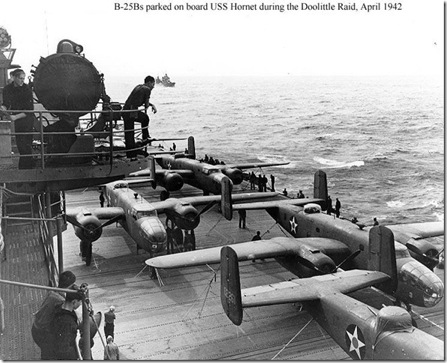 |
| Doolittle's Raiders. |
Caption: B-25Bs parked on the USS Hornet during the Doolittle Raid, April 1942.
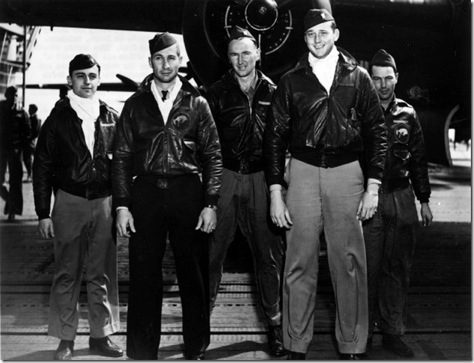 |
| Doolittle's Raiders. |
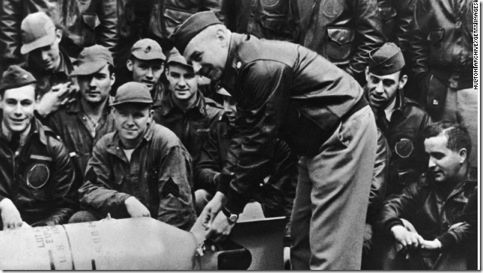 |
| Doolittle's Raiders. |
Jimmy Doolittle checking a bomb on board the USS Hornet.
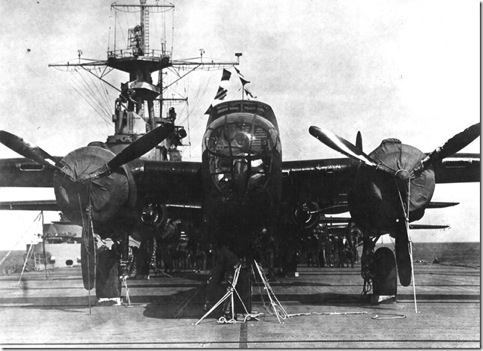 |
| Doolittle's Raiders. |
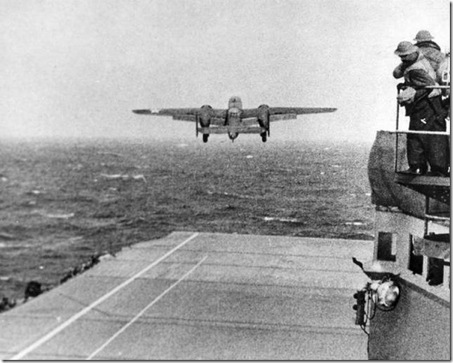 |
| Doolittle's Raiders. |
The first B-25, Jimmy Doolittle's plane, taking off from the USS Hornet.
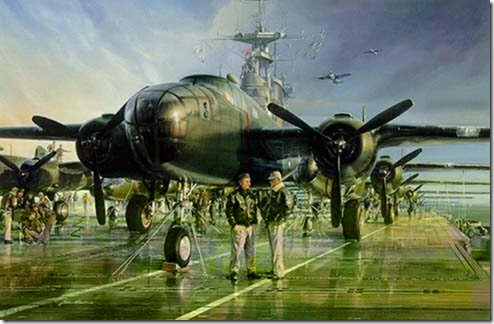 |
| Doolittle's Raiders. |
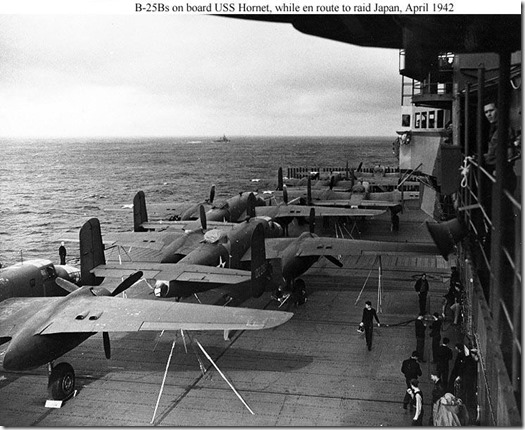 |
| Doolittle's Raiders. |
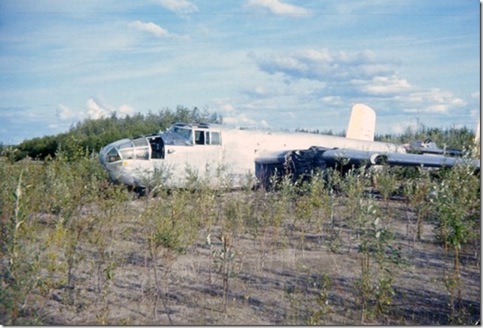 |
| Doolittle's Raiders. |
B-25 the bellied in somewhere in China.
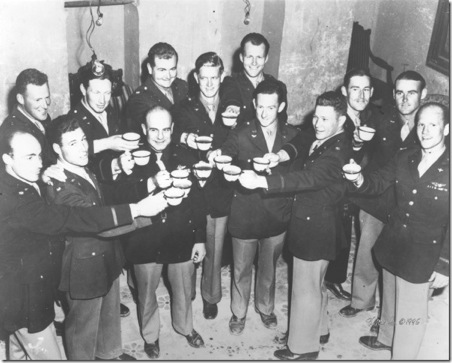 |
| Doolittle's Raiders. |
A toast with Jimmy Doolittle at an early reunion.
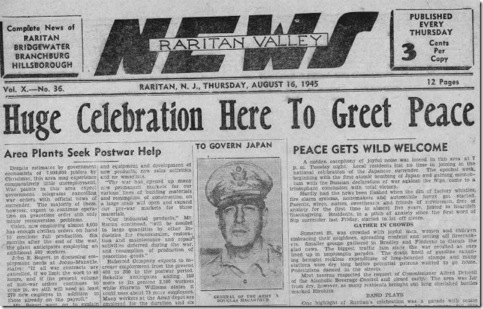 |
| Doolittle's Raiders. |
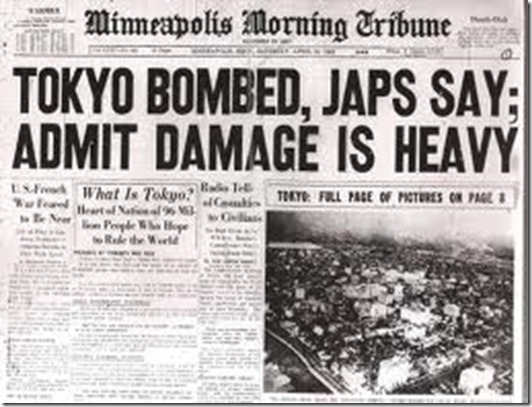 |
| Doolittle's Raiders. |
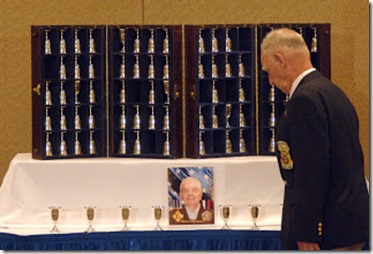 |
| Doolittle's Raiders. |
When a Raider dies, his silver cup is turned upside down. Each cup has the name of the Raider engraved right-side up as well as upside down so that it can be easily read either way.
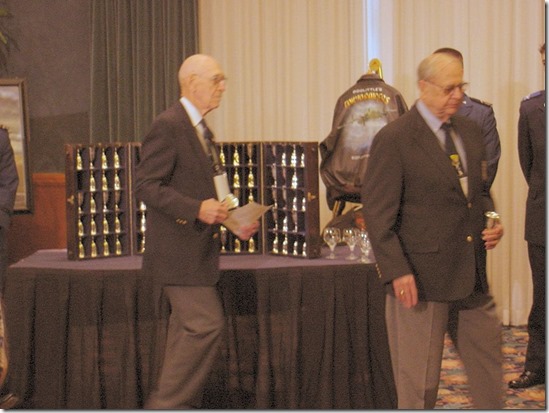 |
| Doolittle's Raiders. |
Raiders with their silver cups preparing to open the bottle of wine to toast those who have died.
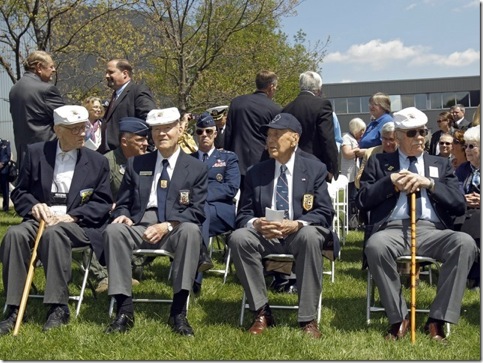 |
| Doolittle's Raiders. |
This photo is the four remaining raiders at the 70th reunion.
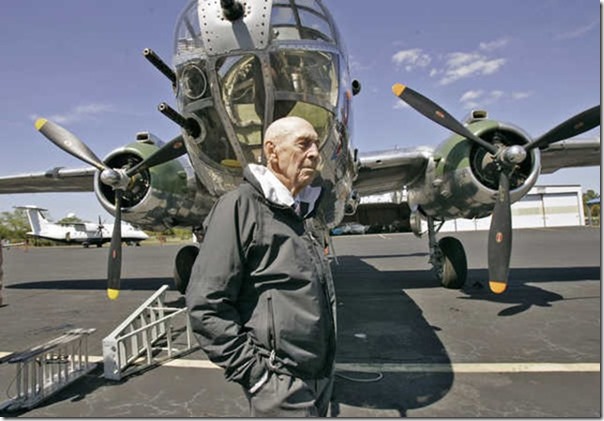 |
| Doolittle's Raiders. |
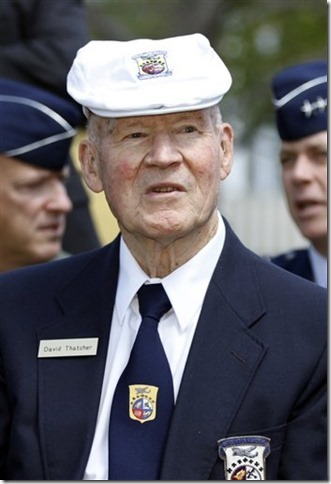 |
| Doolittle's Raiders. |
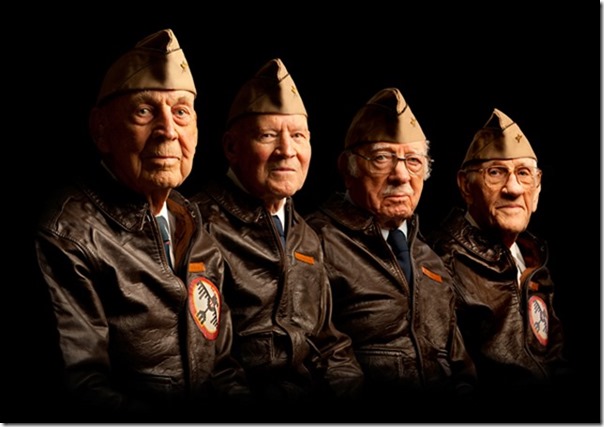 |
| Doolittle's Raiders. |
70th Anniversary Photo of the remaining Doolittle Raiders.
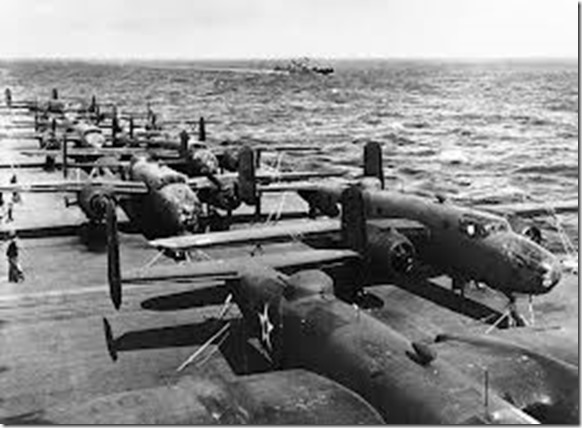 |
| Doolittle's Raiders. |
The B-25s on the flight deck of the aircraft carrier Hornet, warming up their engines in preparation for the short takeoff. WWII aircraft carriers did not have catapults, which probably wouldn't have worked to launch B-25s, anyway.
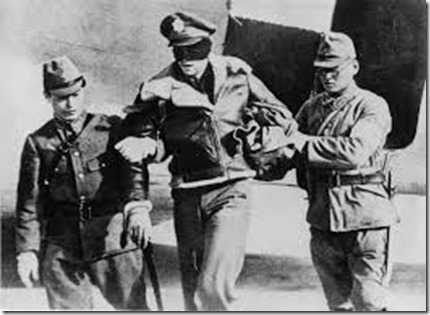 |
| Doolittle's Raiders. |
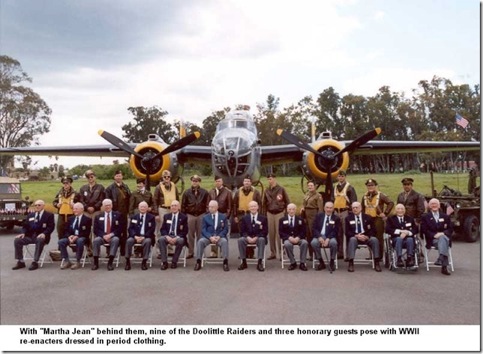 |
| Doolittle's Raiders. |
Caption: With North American Aviation B-25 Mitchell "Martha Jean" behind them, nine of the Doolittle Raiders and three honorary guests pose with WWII re-enactors dressed in period clothing.






















